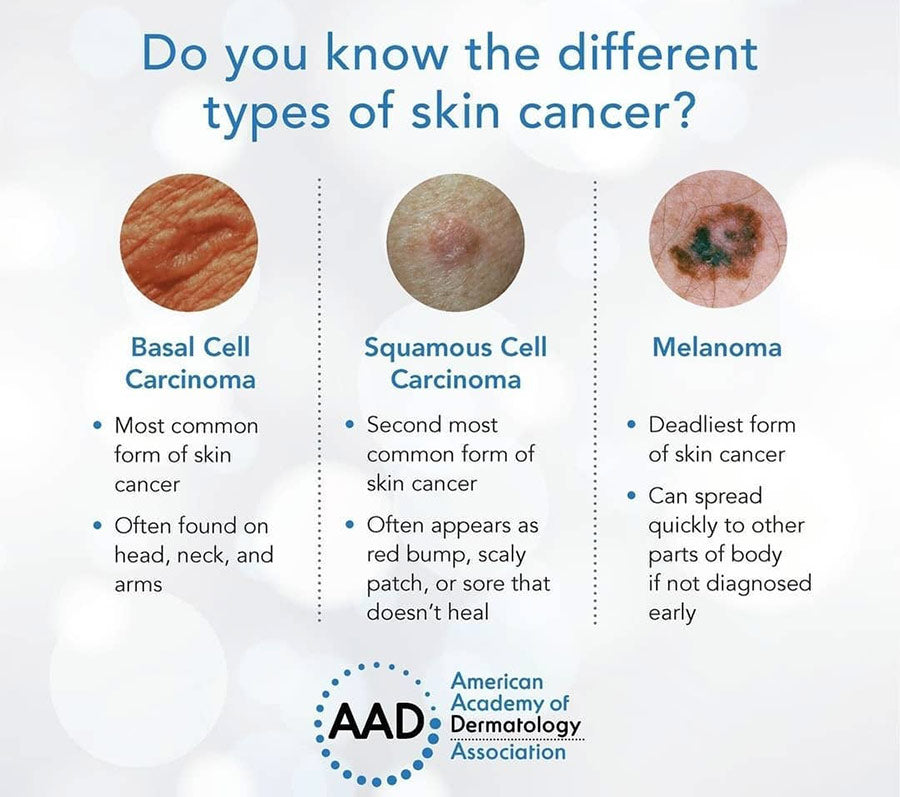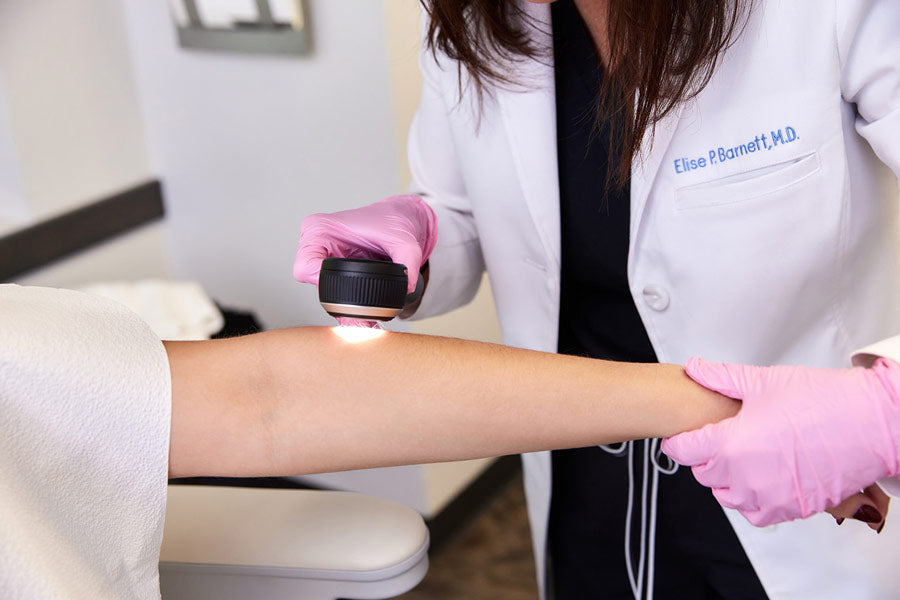
Types of Skin Cancer
Skin cancer typically presents in three different forms: basal cell carcinoma, squamous cell carcinoma and melanoma:
Basal Cell Carcinoma: The most common and mildest form of skin cancer, basal cell carcinoma affects basal cells in the skin which are located on the deepest layer of the epidermis, and are more common on sun-exposed areas of the skin (but can be found anywhere on the body.) They are characterized by a small red patch or growth, or abnormal lesions/changes in the skin that look like open sores and won’t heal, and may occasionally bleed. Basal cell carcinoma should be treated immediately, and with proper treatment has a very high cure rate.
Squamous Cell Carcinoma: The second most common form of skin cancer (accounting for approximately 15 percent of all skin cancers) squamous cell carcinoma affects squamous cells in the skin and occurs on the upper layers of the epidermis. Squamous cell skin cancers most commonly appear on parts of the body frequently exposed to the sun, such as the face, neck, ears, lips, and neck. Some of the signs that squamous cells in the skin have begun to grow out of control and have become cancerous include an area that’s become rough, scaly, thickened and/or wart-like, or a skin sore that doesn’t heal over time. When found early and treated properly, most cases of squamous cell carcinoma can be cured and are easily and successfully treated with current therapies.
Melanoma: Known as the most serious form of skin cancer, melanoma occurs when damaged skin cells begin to mutate and often occurs as a result of intense UV light exposure (either from the sun or tanning beds) that directly affect the melanin-producing skin cells in the basal layer of the epidermis. Melanoma usually appears as a black or brown mole, but can look skin-colored, blue, purple or red as well. Melanoma can develop within a mole that already exists on your skin or can appear suddenly as a dark spot that looks different from others on your skin. Early diagnosis and treatment are crucial – when diagnosed and treated early, melanoma is highly curable. However, some types of melanoma tend to be more aggressive and, if left untreated, can spread to other parts of the body, making it much more difficult to treat than early stages of the disease.
Schedule An Appointment

Benefits of Choosing Our Skin Cancer Treatment Services
Expert Diagnosis and Care: Receive thorough skin examinations and accurate diagnoses from Dr. Barnett, a board-certified dermatologist, ensuring early detection and treatment of skin cancer.
Advanced Treatment Options: Benefit from the latest surgical and therapeutic options available for treating basal cell carcinoma, squamous cell carcinoma, and melanoma, tailored to your specific needs.
Personalized Treatment Plans: Dr. Barnett will design individualized treatment strategies that focus on your health and well-being, aiming for the most effective outcomes.
Annual Skin Cancer Screenings: Regular screenings by Dr. Barnett will play a crucial role in early detection and management of skin cancer, potentially saving lives.
Comprehensive Support: From diagnosis through treatment, our compassionate team offers guidance and support, helping you navigate your journey with confidence.
Schedule An Appointment




